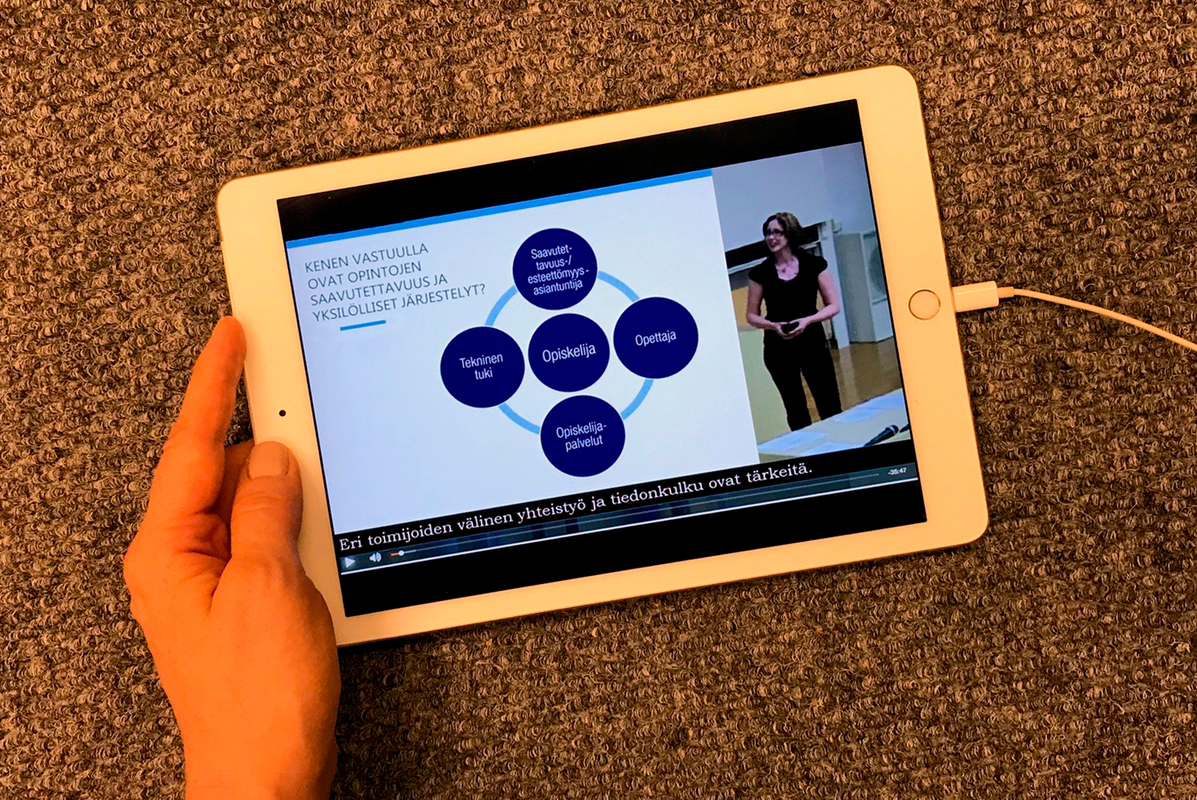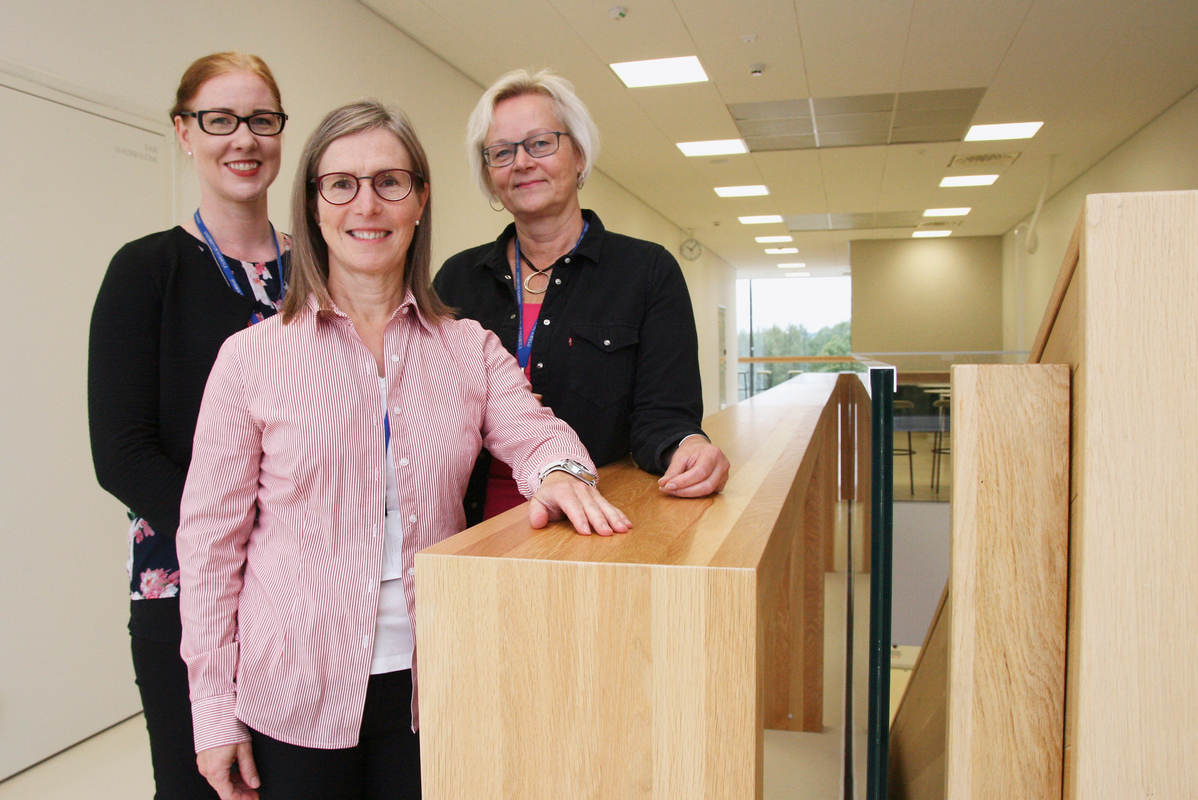The accessibility of digital learning environments concerns everybody
The accessibility of digital learning environments concerns everybody
 Digitalisation concerns closely educational organisations, studying and learning. It offers various new opportunities for the organisation of education and learning. At the same time it also brings obligations and challenges to education providers. In our study we examine the accessibility of study-related digital operation and learning environments. By joint projects involving universities and other higher education institutions, we also seek to increase the pedagogic and technical expertise of their staff. Along with digitalisation the future learning environments will be more diverse than before. In teaching it is important to guarantee for all learners an equal access not only to classrooms but also to digital learning and operation environments. The EU directive on accessibility (EU 2016/2102) requires that authorities make digital services accessible and also supervise the realisation of accessibility. This theme is most topical, since national accessibility legislation is coming to force during autumn 2018 and will concern all public sector schools and universities as well as libraries. In practice this means that all web pages and digital environments should be provided in such a form that everybody can use and understand them. Different users and their needs need to be taken into account at the design stage already.
Digitalisation concerns closely educational organisations, studying and learning. It offers various new opportunities for the organisation of education and learning. At the same time it also brings obligations and challenges to education providers. In our study we examine the accessibility of study-related digital operation and learning environments. By joint projects involving universities and other higher education institutions, we also seek to increase the pedagogic and technical expertise of their staff. Along with digitalisation the future learning environments will be more diverse than before. In teaching it is important to guarantee for all learners an equal access not only to classrooms but also to digital learning and operation environments. The EU directive on accessibility (EU 2016/2102) requires that authorities make digital services accessible and also supervise the realisation of accessibility. This theme is most topical, since national accessibility legislation is coming to force during autumn 2018 and will concern all public sector schools and universities as well as libraries. In practice this means that all web pages and digital environments should be provided in such a form that everybody can use and understand them. Different users and their needs need to be taken into account at the design stage already.
New possibilities for various students
Digital learning environments diversify all students’ learning opportunities and increase possibilities for flexible learning irrespective from time and place. A student will not need to come to a classroom at a particular point of time but can instead attend the lesson online at a home computer. In online studies the student can also often choose a personally suitable time for studying.
The use of technology in teaching can increase the range of different channels for learning. Ideally, a student may watch a recorded lecture with audio-visual contents added with subtitles. If the student wishes to check some background information, for instance, he/she can stop the clip for a while, or watch the lecture again at a later time.
Despite temporal and spatial distance, studying in digital learning environments need not be lonesome. Appropriate technological and pedagogical solutions successfully facilitate students’ joint learning and collaboration. Interaction among students or between the teacher and students can be synchronous or asynchronous, depending on the learning objectives.
Challenges
There are many challenges as regards the accessibility of digital learning environments. It may be difficult to recognise the learners’ various needs for support. The responsibility for informing about the needs for individual arrangements rests usually with the learner concerned. The learners and staff are not always aware of the various possibilities and alternatives available. The division of responsibilities within an educational organisation can be unclear and information is not always properly communicated between the players.
Pedagogical solutions can also be discriminative. However, the promotion of accessibility does not necessarily call for separate resources but the problems may arise from the staff’s lacking competence. For example, there are also free and automated tools for the production of multi-channelled materials, e.g. for adding subtitles to educational videos.
The rapid development of technology can cause problems as well. For instance, some digital learning environments are incompatible with the screen reader applications for visually impaired users. On the other hand, technological development also increases accessibility. Nowadays regular smart phones and tablet computers offer functions that earlier required separate technological aids. For instance, a learner can make notes orally and the device transforms them into text.
Collaboration and the flow of information between different players are of primary Importance in resolving challenges related to accessibility. The practices need to be negotiated and communicated: whom the student should contact, whether a medical certificate is necessary, and what kind of alternative learning practices are offered. Feedback must be collected as well as training and support provided on a regular basis.
Tarja Ladonlahti, Merja Laamanen ja Sanna Uotinen
University teachers, PhDs (Educ.) Tarja Ladonlahti and Sanna Uotinen are working at Open University. MA, MA (Educ.) Merja Laamanen is working as an IT specialist in Digital Services. They are engaged in research and development for the promotion of accessibility in higher education studies. They are also working on the accessibility theme in the European TeSLA project (Horizon 2020) as well as in the Digital Campus project funded by the Ministry of Education and Culture.
In the photo (from left): Merja Laamanen, Sanna Uotinen, and Tarja Ladonlahti
Thematic photo: Merja Laamanen, photo of the writers: Martti Minkkinen
Send feedback to the writers: tarja.ladonlahti@jyu.fi, merja.h.laamanen@jyu.fi, sanna.uotinen@jyu.fi
